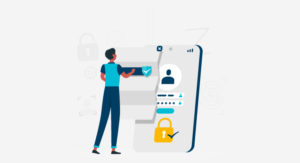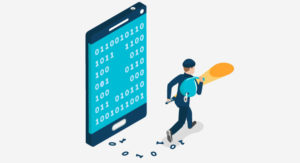Use of Biometrics for Improved Onboarding Experience

The pandemic has changed a lot of ways we do basic activities. The retail space, banking, education, hospitality, and several other industries took the brunt of the pandemic. Fortunately, the reliance on technology improved how we used to do basic activities. These technologies have specifically increased the efficiency of customer onboarding and employee onboarding. So, instead of using physical documents and in-person verification, digital onboarding methods are being used.
Many banks are now generating lower levels of revenue, with some banks reporting a decline as low as 70% from the year before the pandemic. Many banks had to lay off employees and permanently close some of their branches. Banks that have stayed open have adopted new technologies and shifted their day-to-day operations around the technologies available to them. Customer onboarding, ID verification, customer authentication, and other processes all became digital.
While the digital transformation was already underway in the banking sector, the pandemic pushed the transformation into overdrive. Evolving customer expectations, growing FinTechs, and changing regulations around technologies are also helping in speeding up the digital transformation process. By implementing digital ID and document verification solutions, banks can improve the onboarding experience while managing fraud.
Utilizing Biometrics Technologies in Banking
Every person in the world has a unique set of fingerprints and unique hand geometry. Biometric identity verification systems examine these and other biometrics identifiers to identify individuals. The utilization of these systems improves security, speeds up the verification process, and prevents cybercriminals.
In this socially-distanced economy that we’re currently living in, cyber attacks are becoming more prevalent and sophisticated. Fake identities and synthetic identities are on the rise which makes it harder for banks to detect fraud. Almost half of U.S. consumers have experienced some kind of ID theft in the last two years, more than 37% of people have experienced application fraud, and almost 40% of consumers have experienced account takeover fraud.
But it’s not always easy to implement these new methods, and banks have to follow strict compliance standards they have to follow during customer onboarding, which can make it difficult to find a one-stop solution for all kinds of consumers. They need solutions that comply with digital privacy guidelines and updated financial regulations. They also have to make sure that the onboarding experience isn’t too difficult or time-consuming for consumers. Luckily, consumer opinion regarding new technology is changing, which means the adoption of these technologies can be easy.
Use of Biometrics for Customer Onboarding
Biometrics is the most reliable way of authenticating identities and it’s a great method of preventing ID theft and spoofing. Banks know that the use of biometric verification can be helpful as they were the first industry to use them. Banks are now also relying on facial biometrics as multi-factor authentication. This is because facial recognition does not require customers to be physically present at the branch, because of fingerprint scanners, palm scanners, and iris scanners.
Banks all over the world are using layers and layers of biometrics technologies in their daily operations. Banks are now discovering that they can use facial biometric verification since the beginning of customer relationships. This reduces complications for a customer, alleviating the pressure to remember a confusing PIN or token. Using biometrics across banking makes transactions more secure and overall increases security. Moreover, it boosts operational efficiency, all the while making the experience easier for the customers.
Use of Biometrics for Employee Onboarding
As more and more employees are working remotely because of the pandemic, that’s why securing the employee onboarding process is as important as customer onboarding. Employee security breaches are a big concern for all large organizations that deal in sensitive data of any kind. Having a biometric in the employee onboarding process is quite similar to customer onboarding.
Employee-owned smartphones are loaded with a mobile app that initiates their enrollment into your business. Or companies can build a custom employee onboarding program by combining online document verification services and biometric verification.
Digital Transformation Across Industries
Before the Covid-19 pandemic changed the world, retail banks and credit unions completely relied on manual onboarding processes. This clumsy process was time-consuming, inefficient, and insecure. Collecting identity information can be laborious and waiting for the information to be verified can take even longer, thus making the process inefficient.
Online onboarding technologies verify customer identities by comparing customer photos and IDs. And verify online documents such as utility documents, bank statements, and other documents. This improves the user experience and reduces abandonment rates. Plus it can be done remotely, without customers needing to stand in big lines and it also reduces the document handling costs for banks and other businesses.












